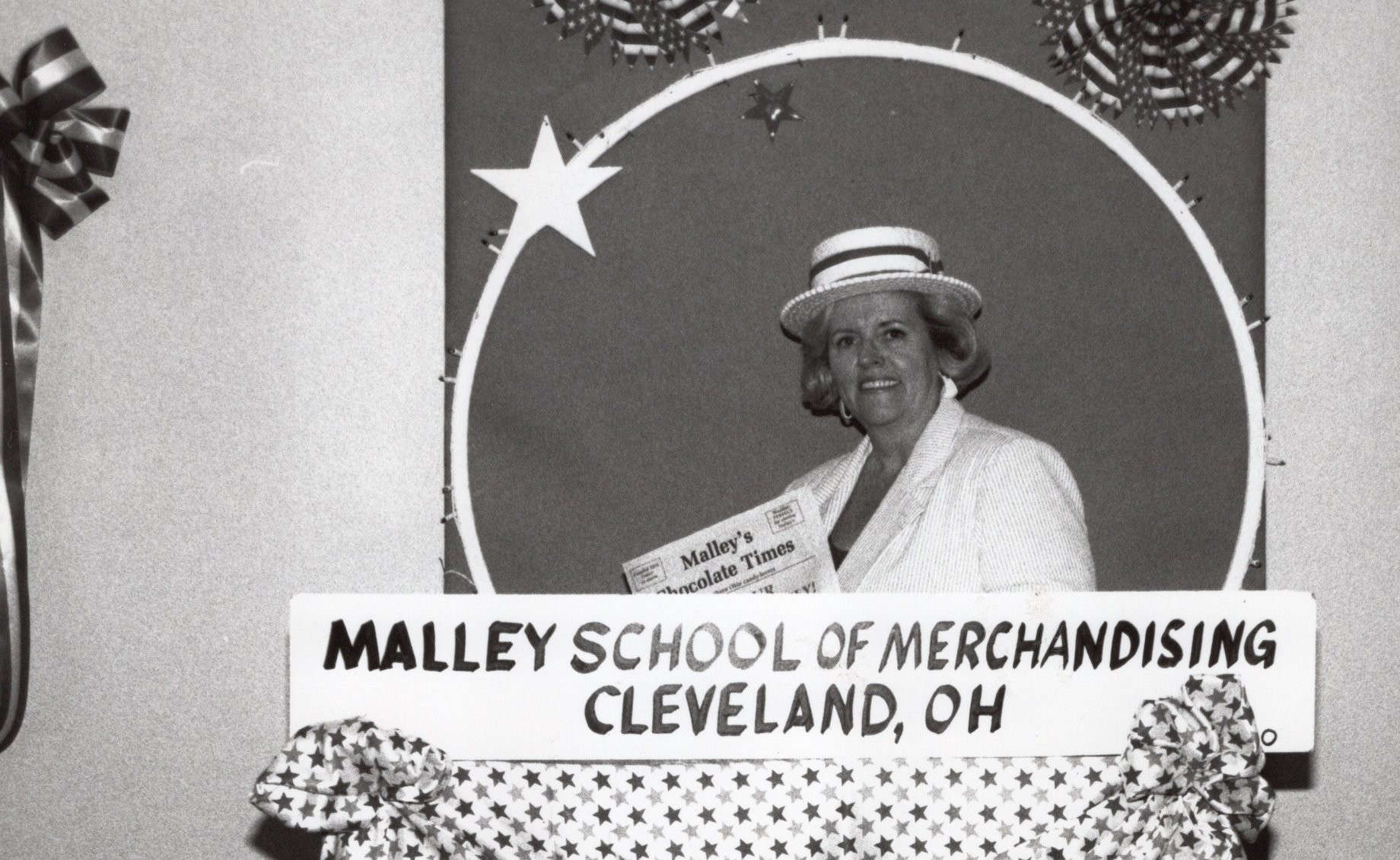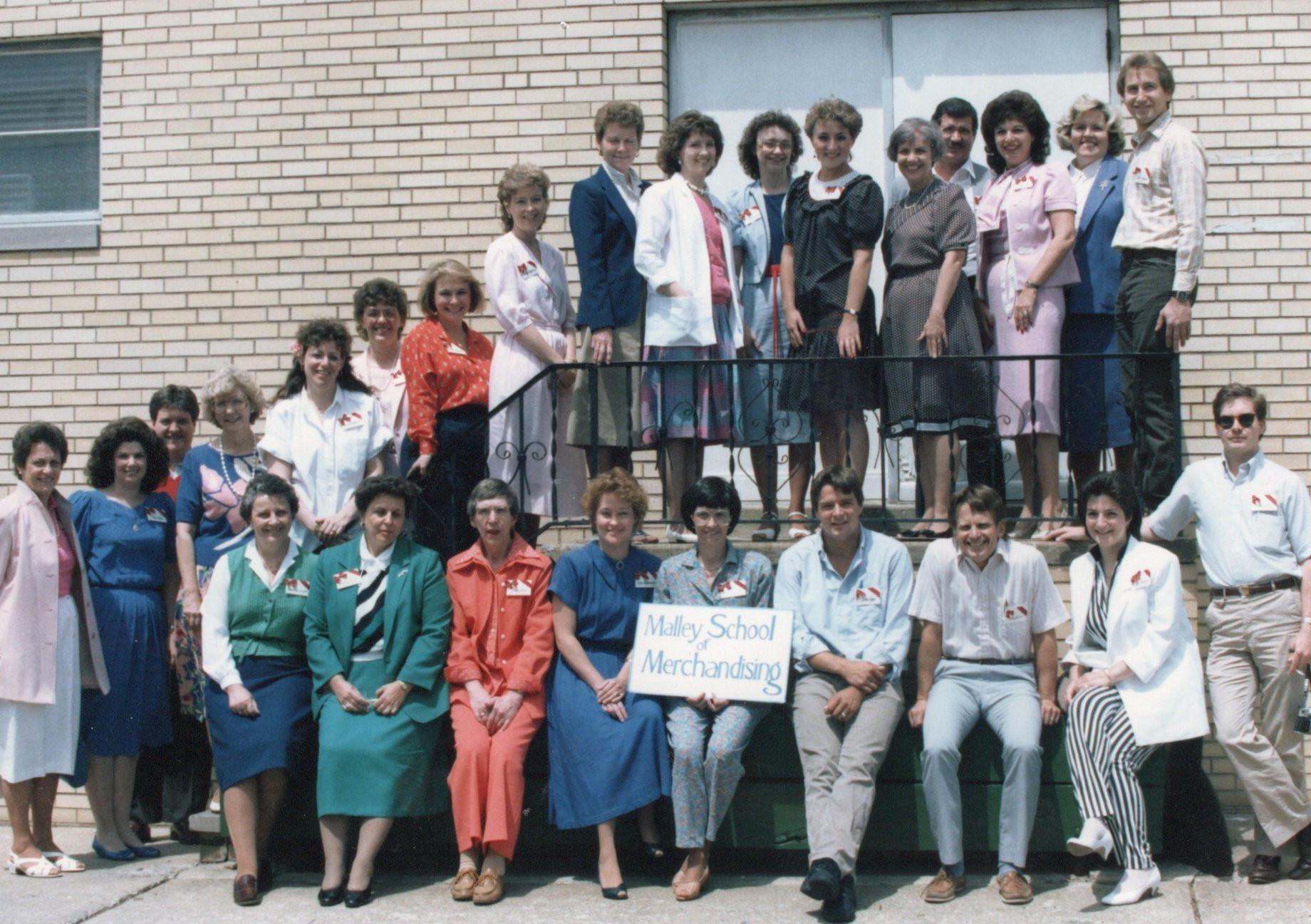Success is in the details. That’s an axiom that Adele Malley fervently believes. In 1983, Malley wrote to the board of Retail Confectioners International, a trade association for chocolate- and candymakers, with a nagging concern. “We’ve been helping [our members] make the chocolates, but we haven’t spent time teaching them how to make their stores and their chocolates look good to their customers,” she wrote.
And Adele Malley, who with her husband Bill headed the Malley’s Chocolate emporium for decades, knows a thing or two about just how important those details are to success. Operating since 1935, the family-owned chocolate company is known almost as much for its enticing displays and iconic pink and green packaging as for its mouthwatering milk chocolate. In each of its 19 Ohio stores, Adele thinks through every detail, from the lighting — for the best results, consider a combination of ambient lighting, task lighting and accenting lighting — to the arrangement of the display tables — “You want to create a journey for your customers” through the displays. The importance of visual merchandising inspired her to open the Malley’s School of Merchandising for chocolate companies. Throughout its 25 years of operation, the school attracted representatives of renowned chocolatiers like See’s Candies, Ethel M Chocolates and Darrell Lea, one of the largest chocolate producers in Australia.
Malley, the 86-year-old former CEO and current chair of Malley’s Chocolates, just published her first book, Conversations with Adele, which offers advice for aspiring entrepreneurs. She spoke with ICSC Small Business contributing editor Rebecca Meiser about tips on standing out in the marketplace, the importance of gift wrapping and more.

Adele Malley
Talk us through your path to opening up Malley’s School of Merchandising?
My husband, Bill, who is now deceased, and I were very active in our industry’s association, the Retail Confectioners International. We’d have conventions in different parts of the country. After the convention, we’d visit different [chocolate] stores in whatever state we were in. In that time, we got to see a lot of chocolate shops. I could see that many of our members’ pride and joy was in what they produced, but they weren’t showing it in pride of merchandising. They weren’t displaying their products in a way that their customers would be enticed to try their chocolates. I started thinking: “Jeez, that’s such a shame. They’re such nice people with such nice chocolate.” So I wrote to the Retail Confectioners board of directors and told them how I felt and that I’d be very happy to help start a school on merchandising. I asked them to please let me know what they felt about it and who they could get to contribute to staff the school. I got a letter back that stated that no one they knew had what I was looking for. They suggested that I take [the training] on myself because they had no one who was doing that in their company, and this was across the United States. I let it ride for about a month or two, and finally my husband Bill said to me, ‘Adele, you know you’re burning to do this.’ Why don’t you start a school yourself? So that’s how the Malley’s School of Merchandising came into being.

What was the school like? Who came? How long were the sessions? What did you teach?
People would come out for five days. At first, it was presidents of chocolate companies who came. Then it was assistants to presidents, and then it became the people who did the work. Every day had a different itinerary. In the beginning, I would take them to most of our stores and I would go through the different types of shapes and layouts. Some stores had more storage space. Some had longer and wider windows. Some were tiny.

The first class of Malley’s School of Merchandising in the ’80s
I would invite them to bring pictures of their stores, and I would personally sit with everyone and talk through their setup and offer advice. Application was key. I talked to them about colors and how to make layouts work better for them. I also took them to a private special showing at GE Lighting to show them the effects of different types of lighting. We also spent a lot of time talking through things like window design and how to build displays within the store. We talked about things like how you do wrapping of the merchandise. For instance, some [people] were just picking out pretty wrapping paper, not thinking about: “How is this going to look in the store with the colors I’ve already got? How does this connect to my brand?” We spent a lot of time, actually, talking about how to wrap, how to make bows and what kind of bows to make for which packages. We also taught about displays: how to arrange things within your store to create a “journey.” When people walk in your store, they land on what I call a landing pad, the spot just inside the door, so we talked through the importance of: What is it customers see first? What’s going to attract them to come into the store?
Why are these details, such as the way you style bows on gift wrapping, so important? Does that still apply today?
I’d argue that they apply even more today. You’ve got to make your store stand out. You’ve got to think of your store as a place customers go for entertainment because, really, anybody can get something like your chocolate anyplace they go: grocery stores, pharmacies. You’ve got to make your store different. You want people to feel like: “Gosh, this is a nice store. I felt really good being there.” So when they go home and someone asks, “Oh, what did you do today?” your customer can respond: “Well, I went up and saw that store on South Street and they were the nicest people and I bought the cutest thing.” Well, that person, if they’re a friend, is going to say “Wow,” and when that friend is out, she’s going to say: “I think I’ll go over and take a look at that store.” It’s that way that you build your clientele.
You talk a lot about the importance of displays. What makes for a good display?
I liken displays to a circus. There are three rings, and that center ring is the main ring. That’s where you’ve got to make sure you’ve got your proper lighting and products that attract and hold your customer’s attention. Everything, of course, can’t be on the main display. If people look in your store and immediately see 15 different items on a display table, it overwhelms them. People think: “I don’t know what to do. There’s this set, and here’s another one [my friend] might like.” It overwhelms them. People are busy. They’re working. They’ve got kids. They’re already frenzied. What you want to do is quiet the people’s minds down so they can look at one thing. Then you’ve got to have some kind of flow that leads people to the secondary display and then to the third display. Remember, you’ve got to get them on a journey.
What are the top three takeaways you’d advise small business owners to think about to have success in their stores?
No 1: Invest in proper lighting. Lighting is where you should spend your first dime. Proper lighting makes the packages pop off the counters or the tabletops. It shows off what you’re selling. A lot of stores you walk in — it’s just fluorescent tubes all over their ceilings and they think it’s lighting. Ha! It’s very high up, there’s very little direct lighting, so nothing’s catching your eye. Instead, consider a combination of different lighting types, including ambient lighting for general illumination, task lighting, for specific areas like cash registers and accent lighting to highlight products. And with the accent lighting, make sure the lighting is on your product. Every time you change your display, you have to change the lighting.
No 2: Spend time thinking through your displays. When somebody pokes their head in the store, your displays have got to have a “Come hither, come look at me” [vibe], because that’s what’s going to draw customers in. If you don’t have something that’s going to draw them in, they’re just going to walk in and walk out.
The third thing is how you greet people. If you greet customers with just a hello and then leave them to themselves to browse through the store, well, they’ll browse themselves right out the door. Talk to the customers and make the store come alive to them. Point out a sale or point out what your new pieces are. Even if they don’t buy anything, you’ve given them talking points, something to tell their friends about the store. That’s why your salespeople have got to know, too, the features and benefits of each of your products.
Malley’s School of Merchandising operated successfully for 25 years before it closed. Do you have any good success stories you can share?
One time, a very well-known company, Sanders Candy, was in Chapter 11 bankruptcy. Fred Sanders sent a representative to our school hoping to learn something. The fellow went back and showed Fred some of the things he’d learned about design and merchandising, and the two talked to the judge. The judge said: “Well, if you set up your [new] designs in my quarters, I’ll make a decision.” When the judge saw what they could do compared to what they were doing, things like window designs and new displays within the store, he took them out of Chapter 11. They’re still in business now [under Kar’s Nuts], doing great.
By Rebecca Meiser
Contributor, Commerce + Communities Today and Small Business Center